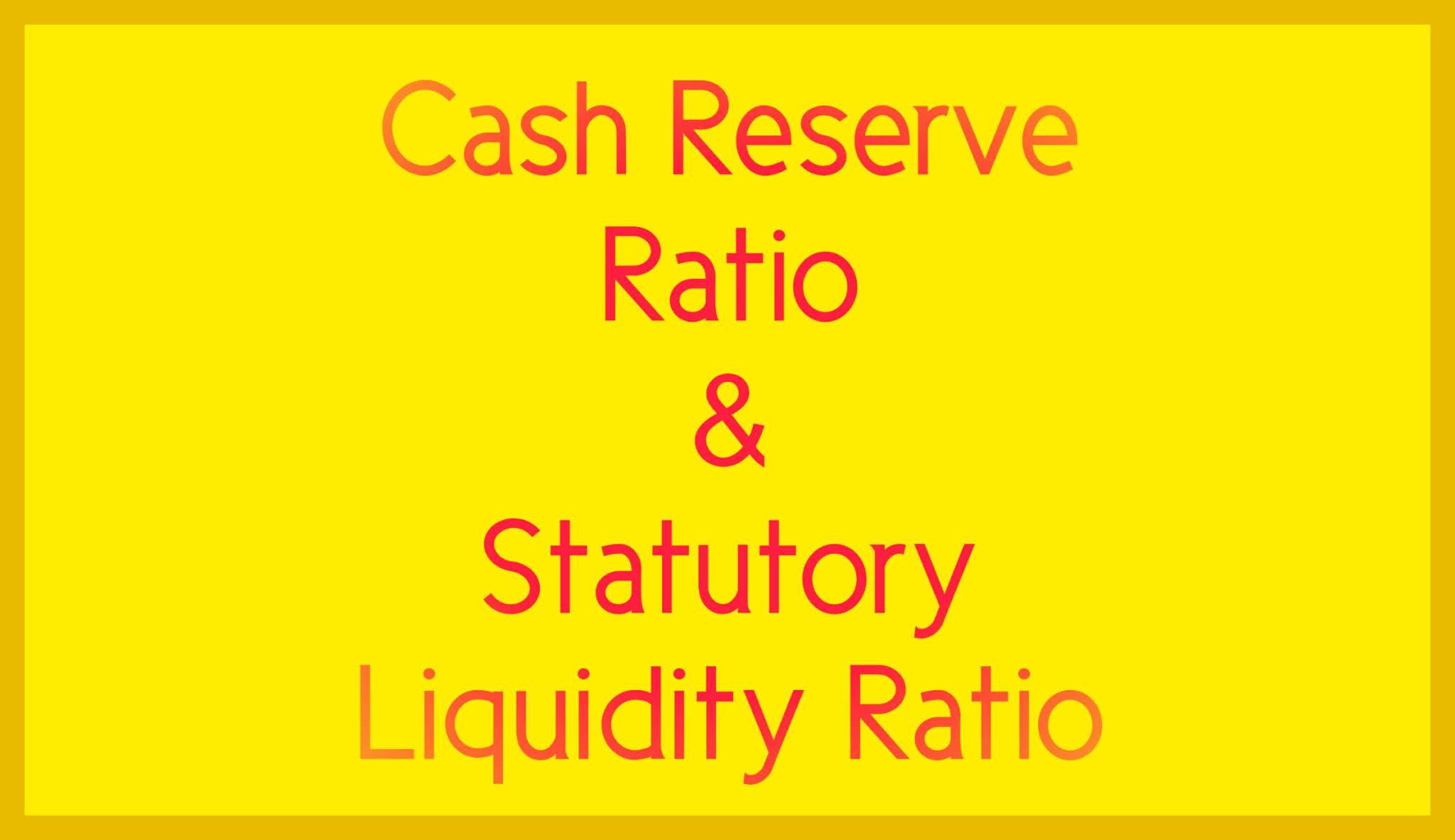 |
| Cash Reserve Ratio and Statutory Liquidity Ratio |
WHAT IS CASH RESERVE RATIO (CRR) ?
- Cash Reserve Ratio is the percentage of deposits (cash) that commercial banks have to keep with RBI. Under CRR, a certain percentage of a particular bank's total deposits is to be kept in a current account with RBI. Banks can not use the money kept as CRR for business purposes. That means banks can't lend that money to any borrower. RBI uses CRR as an instrument for controlling liquidity in the market.
How CRR affects the market ?
- If CRR is high, that means deposits (cash) of a bank with RBI increases, which leads to decrease in the lending capacity of a bank. Because of decrease in lending capacity, borrowing (loans) becomes expensive which means higher interest rates. Flow of money in the market also decreases because of higher CRR, which leads to decrease in inflation.
- If CRR is low, that means deposits of a bank with RBI decreases, which leads to increase in the lending capacity of a bank. Because of increase in lending capacity, borrowing (loans) becomes cheap which means lower interest rates. Flow of money also increases because of lower CRR, which leads to increase in inflation.
WHAT IS STATUTORY LIQUIDITY RATIO (SLR) ?
- SLR stands for Statutory Liquidity Ratio. Every Bank must have a decided portion of its Net Demand and Time Liabilities (NDTL) as money, gold or other liquid assets at the end of the day. The ratio of these liquid assets to the NDTL is known as Statutory Liquidity Ratio (SLR). Reserve Bank of India has the power to increase this ratio up to 40%.
CURRENT CRR AND SLR :
Current CRR is 3% (Sept.2020)
Current SLR is 18% (Sept.2020)







0 Comments
We encourage respectful and relevant comments. Thank You!
Emoji